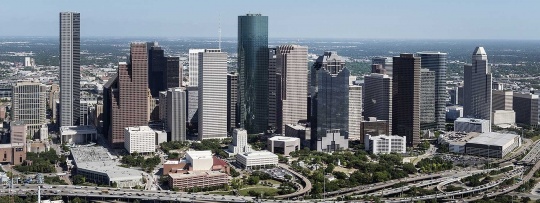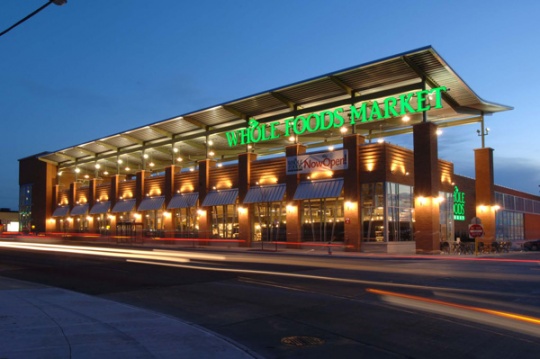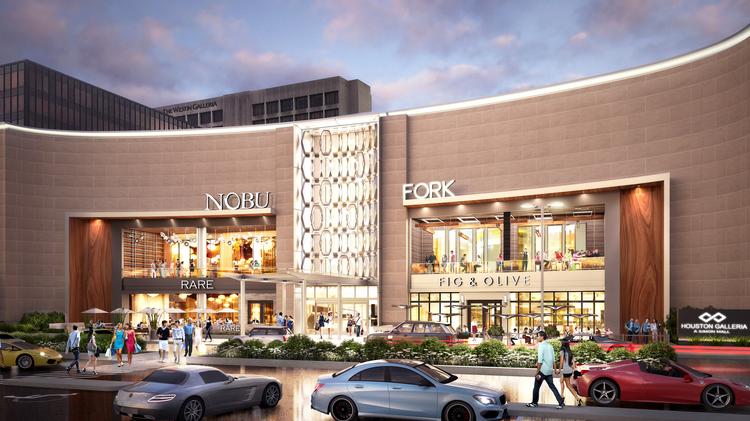
HOUSTON REALTY ADVISORS, INC. OUR NAME SAYS IT ALL!!!! 713-782-0260
Over the next days, weeks and months, we will be working with our Downtown stakeholders to support the recovery of our great City. Overall, Downtown has fared well and is stable. While conditions are improving, we realize that many areas of Houston still have high water and/or no power, in addition METRO will not be in service today and may have limited service during the rest of the week, we recommend people act with caution to ensure their safety.
After reaching a peak on Sunday, Buffalo Bayou water levels in Downtown continue to decrease; high waters were primarily in the northern and western areas of Downtown (Warehouse, Historic and Theater Districts). Flooding in the Downtown Tunnels was isolated to sections adjacent to the Theater District and Civic Center garages.
Since Sunday, the George R. Brown Convention Center, and now Toyota Center, has been operating as a major relief facility for evacuees with significant activity around the area. We expect to see very few Downtown workers coming back today, with more on Thursday and Friday. Some restaurants are open including The District, Frank’s Pizza, Conservatory, Prohibition, Flying Saucer, Sol Café Mejicano, Jason’s Deli- 901 McKinney, Treebeard’s- 1100 Louisiana (call-in orders only), Your Pie, and Phoenicia Specialty Foods Grocery.
The Downtown District continues to outreach to property owners, property managers, businesses and residents and will be assessing damage.
Below is a summary of the situation to date:
- Downtown District Operations continues coordination with City, County and METRO making ongoing assessments and outreach to properties and businesses.
- Based on observation and reports to date, the following properties have been affected primarily water in first level/basement spaces; detailed property assesments are not available at this time:
- Spaghetti Warehouse, 901 Commerce
- Sunset Coffee Building, 1019 Commerce
- 800 Commerce, law offices
- AIA Houston (u/c), 900 Commerce
- One Main and Student Life Buildings, University of Houston Downtown
- Willow Street Pump Station, Universty of Houston Downtown
- Dakota Lofts, 711 William
- mArchitects, 1206 Nance
- Oxheart/Theodore Rex (u/c), 1302 Nance
- Cotton Exchange Bldg, 202 Travis
- Bayou Lofts, 915 Franklin
- The Rice, 909 Texas
- Market Square Tower
- Hogg Palace, 401 Louisiana
- Chase Motor Bank, 212 Milam
- Magnolia Ballroom, 715 Franklin
- Theater District and Tranquility Garages
- Bayou Place
- Downtown Aquarium
- Houston Ballet Center for Dance, 601 Preston
- Wortham Theater Center, 501 Texas
- Jones Hall, 615 Louisiana
- Alley Theatre, 615 Texas
- Hobby Center, 800 Bagby
- City Hall and City Annex
- Sam Houston Park/Historic Homes
- 1415 Fannin (fire damage)
- Streets to and within downtown are open, although some freeway exit ramps leading into Downtown remain impassable.
- There are isolated power outages in the Historic District and Harris County complex; CenterPoint Energy is working to restore.
- A traffic signals are out in the north end, please stop and use caution.
- Downtown District Operations is currently picking up minor debris, as well as tipping trash receptacles and picking up bagged trash.
- METRO services are suspended though Wednesday; updates can be found at ridemetro.org and via their social channels.
- Schools (Incarnate Word Academy, South Texas College of Law and University of Houston Downtown) will resume classes on Tuesday, September 5.
- Many events are being cancelled or rescheduled. We will update our Calendar as we get info.
For status updates, visit emergency.downtowndistrict.org or follow us on Facebook and Twitter.
ABOUT DOWNTOWN DISTRICT
The Downtown District was formed in 1995 for the purpose of revitalizing the urban core of the country’s fourth largest city. Over the past decade, the Downtown District has used a combination of public funds and private resources to catalyze area improvements focusing on the city blocks bordered by Interstate 10, Highway 59 and Interstate 45.
The Downtown District operates under the leadership of a 30-person board of directors who oversee the implementation of the District’s strategic initiatives. Funding for the Downtown District comes from a special assessment on all downtown property owners.
For more information visit downtowndistrict.org.

 In formats big and small, the number of players and concepts grows. When it comes to store size in the Texas grocery business, there’s no such thing as too big or too small. From the 100,000-square-foot Kroger to a 5,000-square-foot Hispanic butcher, the state’s torrid population growth has not only opened the door for a plethora of grocery concepts and competitors, but it has also given grocers the flexibility to match the size of their stores to the population densities of the surrounding submarkets. The Lone Star State has added approximately 850,000 new residents over the past two years combined, with the growth balanced between urban and suburban areas. According to Simmi Jaggi, senior vice president in JLL’s retail brokerage division, this balance enables grocers to customize new locations to existing market characteristics, rather than gamble on an influx of people that may or may not come. “In urban settings, we see grocers getting smaller and more agile, in some cases going to a vertical, multi-story layout,” says Jaggi. “But in suburban markets, we see grocers generally getting bigger.” Even in urban settings, when land constraints become a bigger factor in site selection, ultimately it’s the demographic analysis of the area that dictates size of the project, says Jaggi. Basing store size on population volume generates a high level of sales per square foot, a key metric in evaluating the performance of grocery stores. “The true, key factor in the site selection process is density of population,” says Jaggi. “After that, it’s a prime intersection in the middle of a dense population. That’s what it all really boils down to, because in the grocery business it’s all about sales volume.” In addition to playing into demographics, Texas grocers are able to build and lease locations that mesh with their brand images. Traditional grocers like Kroger and H-E-B can go bigger, enhancing their appeal to onestop shoppers. Specialty grocers like Trader Joe’s, on the other hand, can go smaller, solidifying their images as niche retailers with high-quality, private-label offerings. Jason Baker, founding partner of Houston-based retail brokerage firm Baker Katz, credits this trend to the efforts of traditional grocers such as Kroger and H-E-B to diversify their product lines and service offerings. “Twenty years ago, Kroger and H-E-B were doing 25,000- to 35,000-square foot stores,” says Baker. “Now, both grocers are at or above 100,000 square feet because they’re offering everything from furniture and extended pharmacies to shoes and haircuts, not to mention stores that now have full restaurants operating inside. The willingness to experiment is driven by the significant foot traffic they generate.” As for the specialty chains, adds Baker, their movement toward smaller store spaces stems from a willingness to locate stores closer to one another, a byproduct of expanding into more densely populated urban spaces. But flexibility, by definition, goes both ways. Not all big stores are getting bigger, nor vice versa. According to David Livingston, an independent researcher and site selection consultant for supermarkets, some chains are rebelling against their traditional formats and brand images simply because a given target market demands it. “Small formats like Aldi have been getting somewhat smaller, and large formats like Walmart have been developing smaller stores to better fit smaller markets,” says Livingston. “Target has also been developing smaller urban formats for more densely populated cities. Basically, supermarkets will fit the store to the market.” One Game, Many Players With great population growth comes great competition. Specialty grocers like Sprouts Farmers Market and its subsidiary, Sunflower Farmers Market, have been expanding in Texas since 2002, the year both chains were started. Then there is upscale organic grocer Whole Foods Market, which is based in Austin. These companies rank first, fourth and eighth, respectively, on Chain Store Guide’s list of the 50 fastest-growing grocery franchises in the United States, based on five-year unit growth. Despite the successes of these grocers, consumer trends still seem to favor the big players. According to a 2016 study by Food Marketing Institute (FMI) and food and beverage consulting firm The Hartman Group, the average shopper makes 1.6 trips to the grocery store per week, spending about $100 per trip. In such an environment, one-stop shopping marts with low price points retain the advantage. By Taylor Williams Texas RE Business Magazine
In formats big and small, the number of players and concepts grows. When it comes to store size in the Texas grocery business, there’s no such thing as too big or too small. From the 100,000-square-foot Kroger to a 5,000-square-foot Hispanic butcher, the state’s torrid population growth has not only opened the door for a plethora of grocery concepts and competitors, but it has also given grocers the flexibility to match the size of their stores to the population densities of the surrounding submarkets. The Lone Star State has added approximately 850,000 new residents over the past two years combined, with the growth balanced between urban and suburban areas. According to Simmi Jaggi, senior vice president in JLL’s retail brokerage division, this balance enables grocers to customize new locations to existing market characteristics, rather than gamble on an influx of people that may or may not come. “In urban settings, we see grocers getting smaller and more agile, in some cases going to a vertical, multi-story layout,” says Jaggi. “But in suburban markets, we see grocers generally getting bigger.” Even in urban settings, when land constraints become a bigger factor in site selection, ultimately it’s the demographic analysis of the area that dictates size of the project, says Jaggi. Basing store size on population volume generates a high level of sales per square foot, a key metric in evaluating the performance of grocery stores. “The true, key factor in the site selection process is density of population,” says Jaggi. “After that, it’s a prime intersection in the middle of a dense population. That’s what it all really boils down to, because in the grocery business it’s all about sales volume.” In addition to playing into demographics, Texas grocers are able to build and lease locations that mesh with their brand images. Traditional grocers like Kroger and H-E-B can go bigger, enhancing their appeal to onestop shoppers. Specialty grocers like Trader Joe’s, on the other hand, can go smaller, solidifying their images as niche retailers with high-quality, private-label offerings. Jason Baker, founding partner of Houston-based retail brokerage firm Baker Katz, credits this trend to the efforts of traditional grocers such as Kroger and H-E-B to diversify their product lines and service offerings. “Twenty years ago, Kroger and H-E-B were doing 25,000- to 35,000-square foot stores,” says Baker. “Now, both grocers are at or above 100,000 square feet because they’re offering everything from furniture and extended pharmacies to shoes and haircuts, not to mention stores that now have full restaurants operating inside. The willingness to experiment is driven by the significant foot traffic they generate.” As for the specialty chains, adds Baker, their movement toward smaller store spaces stems from a willingness to locate stores closer to one another, a byproduct of expanding into more densely populated urban spaces. But flexibility, by definition, goes both ways. Not all big stores are getting bigger, nor vice versa. According to David Livingston, an independent researcher and site selection consultant for supermarkets, some chains are rebelling against their traditional formats and brand images simply because a given target market demands it. “Small formats like Aldi have been getting somewhat smaller, and large formats like Walmart have been developing smaller stores to better fit smaller markets,” says Livingston. “Target has also been developing smaller urban formats for more densely populated cities. Basically, supermarkets will fit the store to the market.” One Game, Many Players With great population growth comes great competition. Specialty grocers like Sprouts Farmers Market and its subsidiary, Sunflower Farmers Market, have been expanding in Texas since 2002, the year both chains were started. Then there is upscale organic grocer Whole Foods Market, which is based in Austin. These companies rank first, fourth and eighth, respectively, on Chain Store Guide’s list of the 50 fastest-growing grocery franchises in the United States, based on five-year unit growth. Despite the successes of these grocers, consumer trends still seem to favor the big players. According to a 2016 study by Food Marketing Institute (FMI) and food and beverage consulting firm The Hartman Group, the average shopper makes 1.6 trips to the grocery store per week, spending about $100 per trip. In such an environment, one-stop shopping marts with low price points retain the advantage. By Taylor Williams Texas RE Business Magazine